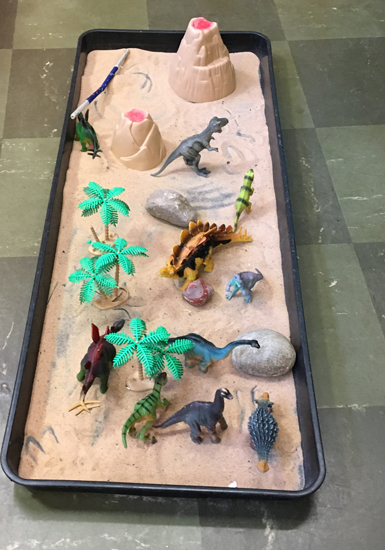Gorseybrigg Year 1 and Dinosaurs
Dinosaurs and Fossils at Gorseybrigg Primary School
Children in Year 1 at Gorseybrigg Primary School have spent the last two weeks studying dinosaurs and fossils. Gorseybrigg Primary is a bright, modern school, with extensive playing fields and spacious, light, well-equipped and very tidy classrooms. Displays all about life in the Arctic are still pinned to the walls of the Year 1 classroom, but slowly and surely these displays are being replaced by various scenes of prehistoric life as the children get to grips with all things dinosaur. On the floor is a miniature dinosaur land created by schoolchildren.
Dinosaurs and a Dinosaur Land
Over the last fortnight, the children have learned about herbivores and carnivores, built their own “Jurassic Park” and explored such questions as whether or not dinosaurs had feathers. The scheme of work that our dinosaur expert viewed prior to his fossil and dinosaur themed workshop was very comprehensive and carefully thought out.
Year 1 Children Make Their Own “Jurassic Park”
Picture credit: Gorseybrigg Primary School/Everything Dinosaur
The dinosaur land features prehistoric plants and a couple of volcanoes. The prehistoric animal models seem to be very much at home.
To view the range of prehistoric animal models and figures supplied by Everything Dinosaur: Dinosaur and Prehistoric Animal Models.
A spokesperson from Everything Dinosaur commented:
“It was a delight working with the children. They were such an enthusiastic cohort. Many of the children stated that they wanted to become palaeontologists!”
A Footprint Measuring Exercise
The children showed a lot of confidence with the dinosaur footprint measuring exercise that we set them. The children were comfortable using rulers and they enjoyed comparing the different types of dinosaur track.
Visit Everything Dinosaur’s award-winning website: Everything Dinosaur.



